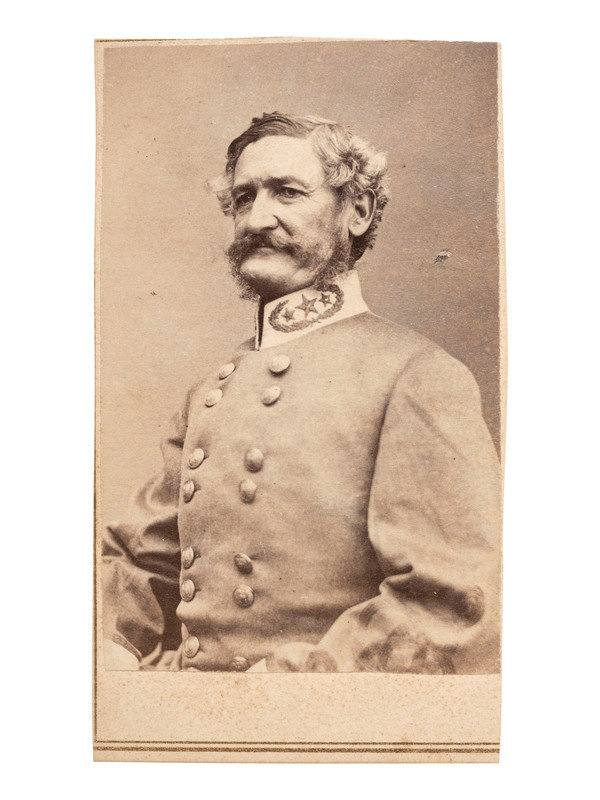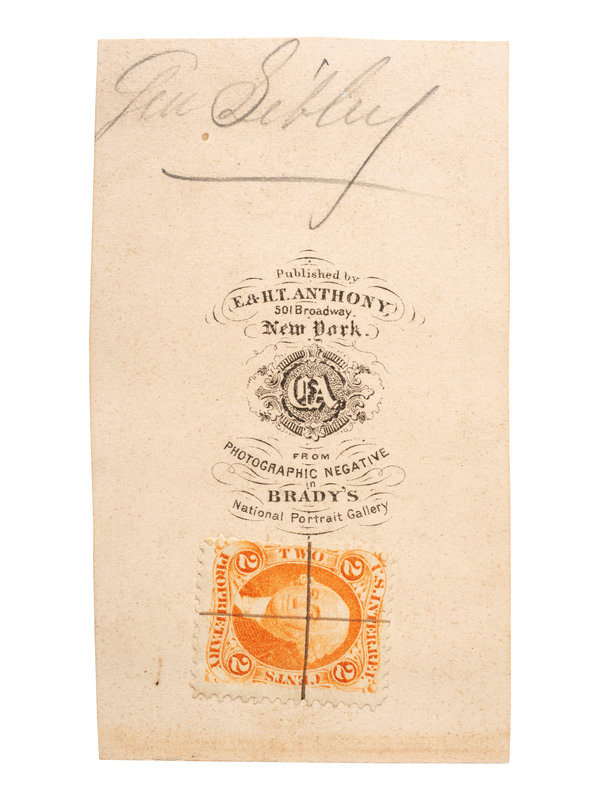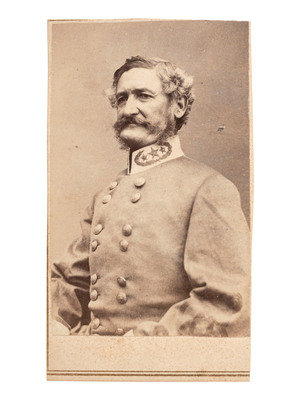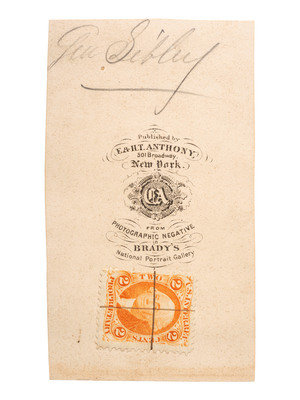Condition Report
Contact Information
Auction Specialist
Lot 74
[CIVIL WAR]. BRADY, Mathew, photographer. CDV of CSA Brigadier General Henry Hopkins Sibley. New York, NY.
Sale 1095 - American Historical Ephemera & Photography, Featuring Property from the James Milgram, M.D., Collection of Broadsides, Ephemeral Americana & Historical Documents
Day 1 Lots 1-403
Nov 3, 2022
10:00AM ET
Day 2 Lots 404-634
Nov 4, 2022
10:00AM ET
Live / Cincinnati
Own a similar item?
Estimate
$300 -
500
Price Realized
$406
Sold prices are inclusive of Buyer’s Premium
Lot Description
[CIVIL WAR]. BRADY, Mathew, photographer. CDV of CSA Brigadier General Henry Hopkins Sibley. New York, NY.
2 x 3 1/4 in. CDV on cardstock mount (toning, spotting and trimming to mount). Verso bears E. & H.T. Anthony/Brady imprint, penciled identification, and affixed 2-cent revenue stamp.
Graduating from the United States Military Academy at West Point in 1838, Sibley had a long and storied military career prior to the outbreak of the Civil War. He fought in the Seminole Wars, the Mexican-American War, the Utah War, and served across the frontier, in Texas, Kansas, and New Mexico. Though he was promoted to the rank of major in the 1st Dragoons, Sibley resigned from the US Army on 13 May 1861 to join the Confederate States Army. He was commissioned a brigadier general and raised a brigade of his own to invade New Mexico, capturing Albuquerque and Santa Fe on his way up the Rio Grande. An important turning point came at Glorieta Pass, however, where Sibley's brigade triumphed over federal forces in March 1862, but lost their supplies to raiders and were forced to retreat with disastrous results. Though he was put back in command of his brigade, the "Army of New Mexico," in 1863, his reputation was somewhat tarnished, and he carried the stigma of poor leadership and alcoholism for the remainder of his life.
Sibley is also known for his innovation in military shelter, the Sibley Tent, for which he drew inspiration from Comanche dwellings. The tent was a conical structure with a center pole affixed to a tripod at the bottom, allowing smoke to rise and exit the top of the tent while a fire blazed at the bottom.
Property from William H. Itoh, collector, historian and retired Foreign Service Officer



